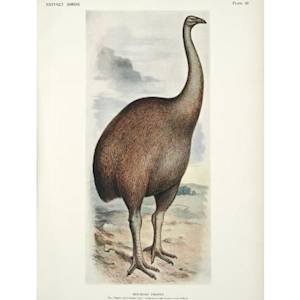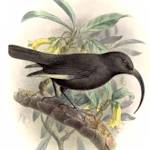Waved albatross
2023 CE • west coasts of Peru and Ecuador, Galapagos Islands
"The waved albatross is the largest bird in Galapagos with a wingspan of up to two and a half metres . . . They get their name from the wave like pattern on the adults’ wings. As with all albatrosses they are exceptional gliders and spend the vast portion of their lives above the open ocean . . . During the non-breeding and chick rearing periods the whole population migrates and can be found between the eastern waters off Galapagos and the coasts between Colombia and Peru . . . They feed mainly on fish, squid and other invertebrates, often scavenging near fishing boats . . . The greatest threat comes from man and mainly from fishing activities. Long-line fishing boats lay out hundreds of miles of baited hooks which attract birds and once they try to eat the bait they get hooked and drown after being dragged under . . . They are also likely to be at threat from marine plastic pollution. Other threats include water pollution, oil slicks and chemicals. Intentional harvesting, for human consumption and feathers, has seen a dramatic increase in recent years." It is estimated that 1 in every 100 waved albatross is killed by fishermen.
Quote: "Waved albatross: Overview," Galapagos Conservation Trust. Wake Forest University, "Fisheries Linked To Decline In Galapagos Waved Albatross Population," Science Daily, October 9, 2006.
Image: putneymark, CC BY-SA 2.0, via Wikimedia Commons


Learn about Maya Lin’s fifth and final memorial: a multi-platform science based artwork that presents an ecological history of our world - past, present, and future.

Discover ecological histories and stories of former abundance, loss, and recovery on the map of memory.

Learn how we can reduce our emissions and protect and restore species and habitats – around the world.

See how art can help us rethink the problems we face, and give us hope that each one of us can make a difference.

Help make a global memorial something personal and close to home. Share your stories of the natural world.


